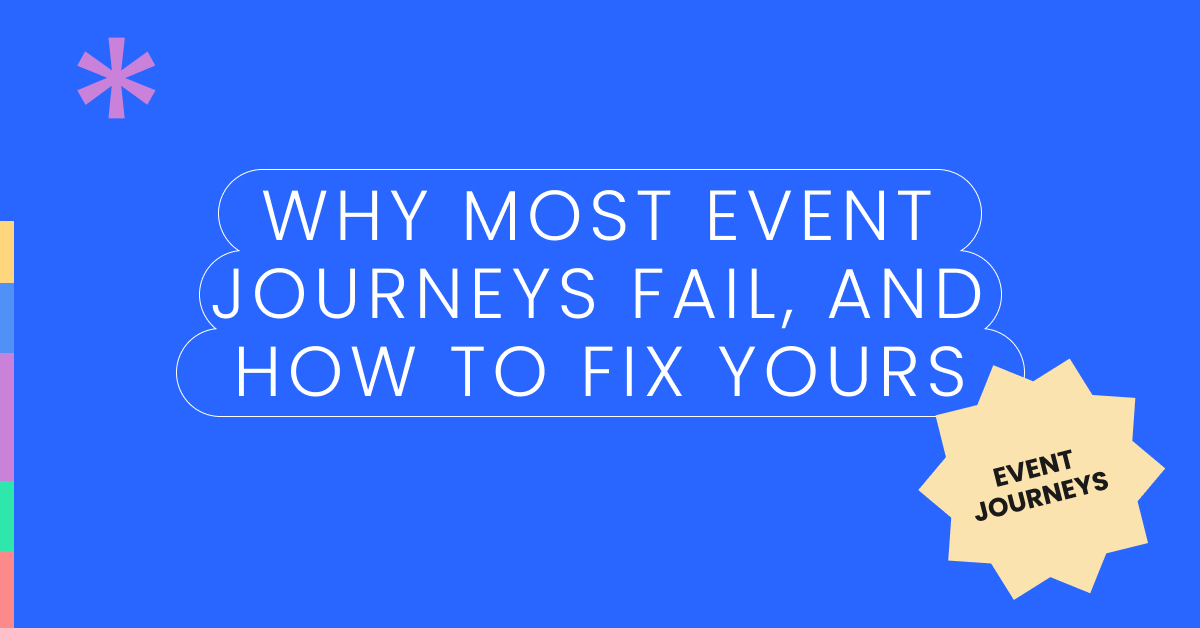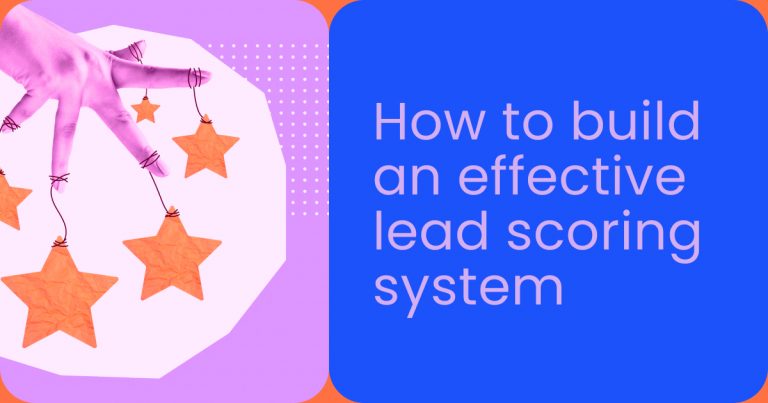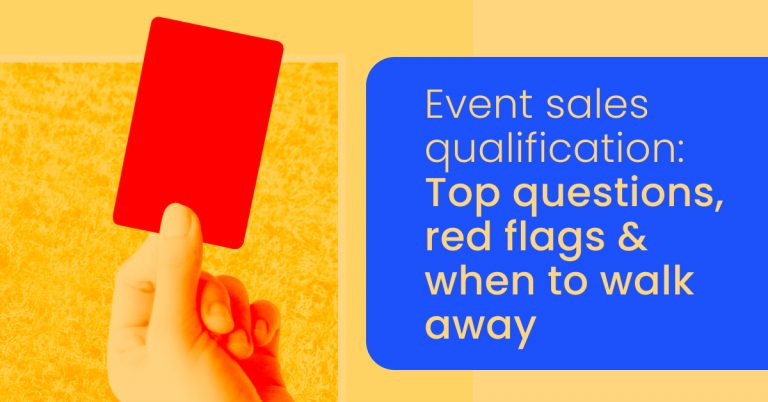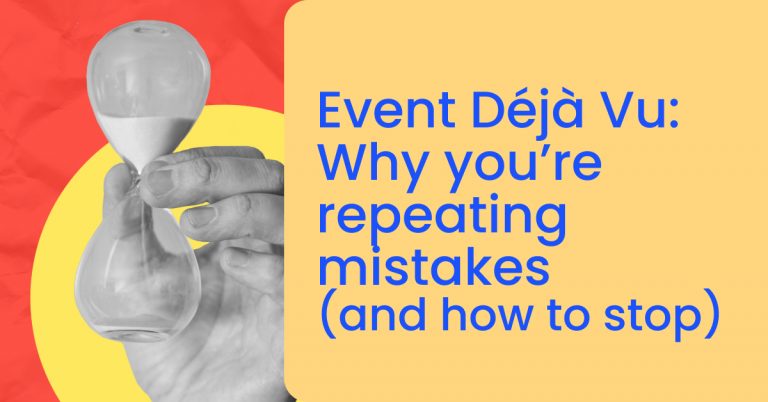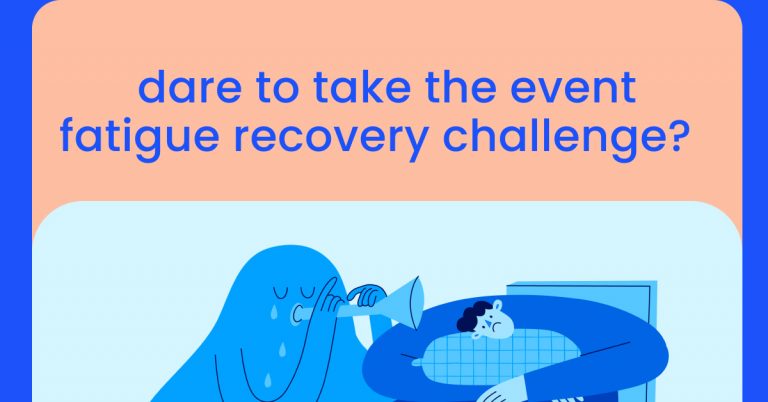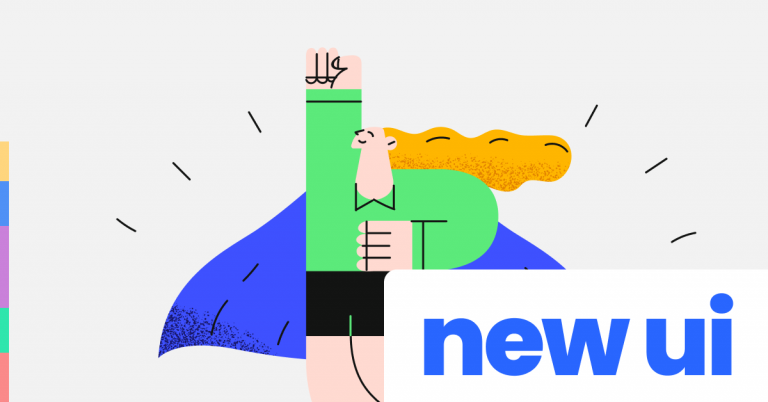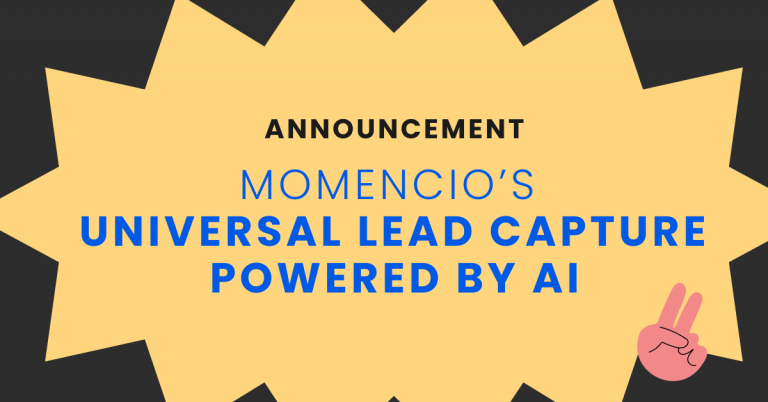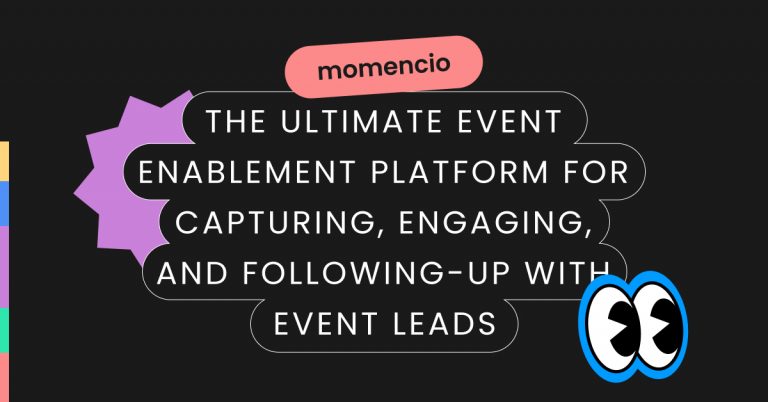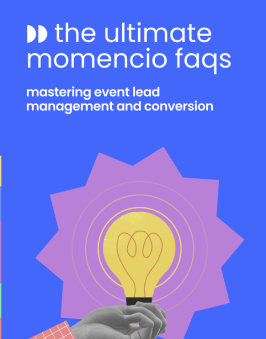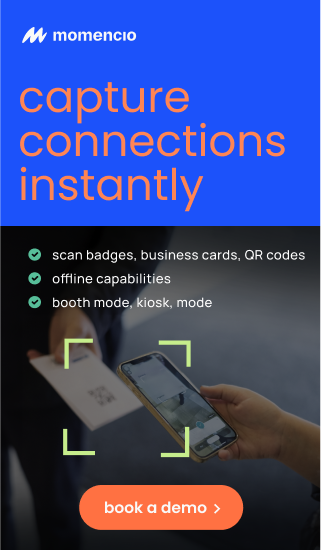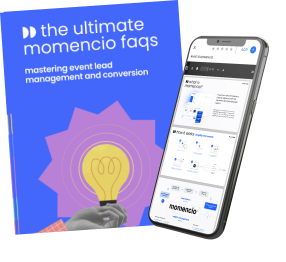The best event strategies don’t just focus on attendance numbers—they prioritize engagement at every touchpoint. Yet, only 45% of event marketers actively map out event journeys, missing opportunities to enhance attendee experiences, drive lead capture, and improve event ROI.
What’s the solution?
By understanding and optimizing the event journey—from pre-event engagement to post-event follow-ups—event planners can transform one-time interactions into long-term relationships. Research shows that companies that leverage event journey mapping experience a 35% increase in attendee satisfaction and a 25% improvement in post-event conversions.
This guide will break down:
- The event journey framework and its three key stages
- How personalization and technology enhance engagement
- Actionable strategies for maximizing event ROI
By the end, you’ll have a clear roadmap to elevate attendee experiences and turn events into powerful marketing and sales engines.
Understanding the event journey framework
Event engagement is no longer about isolated touchpoints; it’s about creating a seamless experience that extends before, during, and after the event. Attendee expectations have evolved, with over 73% of participants now demanding a personalized experience tailored to their needs. Yet, many event planners fail to deliver a structured attendee journey, often focusing only on event-day interactions while neglecting pre-event anticipation and post-event follow-ups.
A well-mapped event journey ensures engagement at every stage, increasing event ROI and strengthening relationships between brands and attendees. It provides a clear roadmap for how attendees interact with an event, ensuring that no engagement opportunity is lost. At its core, an effective event journey is broken down into three critical phases:
Pre-event engagement – The planning and anticipation phase that builds excitement and primes attendees for interaction.
Onsite experience – The event-day execution that captures data, encourages participation, and maximizes engagement.
Post-event follow-up – The critical phase where event data is leveraged to nurture leads and convert interest into action.
Companies that optimize their entire event journey see a 35% increase in attendee satisfaction and a 25% improvement in lead conversion rates. To understand how to create an impactful attendee journey, it is essential to break down each phase and identify the key strategies that enhance engagement at every stage.
Pre-event engagement: Setting the stage for success
The attendee journey begins long before they step into the event venue. The pre-event phase is an opportunity to shape perceptions, generate interest, and provide valuable information that will influence their experience. However, many event marketers fail to take full advantage of this stage, often relying on generic email invitations and basic event promotions without a clear personalization strategy.
One of the most effective ways to build engagement early is through personalized invitations and AI-powered matchmaking. Rather than sending a mass email with a generic agenda, organizers can segment their audience based on industry, job role, or stated preferences, ensuring each attendee receives tailored recommendations on sessions, speakers, and networking opportunities that align with their interests. Advanced event technology now allows AI-driven recommendations to curate schedules, introduce attendees to relevant peers, and guide them to specific exhibitors or sessions that match their business needs.
Another powerful strategy is leveraging exclusive pre-event content. Many organizations underestimate the impact of sharing industry insights, thought leadership pieces, and interactive discussions before the event. Providing access to whitepapers, research reports, behind-the-scenes content, or even a preview of keynote speaker sessions can increase anticipation and give attendees a reason to stay engaged. A LinkedIn or Slack-based networking group for registered participants can also help establish early connections, ensuring that engagement starts well before the event begins.
Pre-event gamification and incentive-based participation can further drive engagement. Encouraging attendees to complete a pre-event survey, engage in social media challenges, or participate in a leaderboard competition based on interaction can set the tone for an interactive event. For example, offering rewards for early registrations, social shares, or active participation in event discussions can create excitement while providing event organizers with valuable attendee insights to shape the experience further.
Onsite experience: Maximizing engagement and data capture
Once attendees arrive at the event, their experience must be frictionless, engaging, and tailored to their interests. Unfortunately, many events fail to provide real-time personalization, resulting in missed opportunities to deepen attendee interactions. Studies indicate that 70% of attendees expect real-time interaction capabilities, yet fewer than half of event organizers actively track attendee engagement in real time.
A seamless check-in experience sets the foundation for a positive event day. Event organizers can eliminate long wait times by implementing QR code scanning, facial recognition check-ins, and RFID-enabled badges. These technologies allow for quick and efficient attendee verification, ensuring that participants spend more time engaging with the event rather than standing in line. Beyond efficiency, smart badges and tracking technology provide real-time insights into attendee movement and behavior, enabling event planners to adjust the experience dynamically.
To maintain engagement throughout the event, organizers must integrate interactive experiences such as live polls, audience Q&A, and gamified activities. Passive attendees tend to disengage, so incorporating real-time polling during sessions, allowing instant feedback through mobile apps, or encouraging participation through scavenger hunts and engagement challenges can make the event more immersive. Technologies such as beacons and AI-driven content recommendations allow organizers to track which sessions attendees engage with the most, enabling personalized session suggestions and tailored exhibitor recommendations.
Networking remains a critical component of any successful event, yet many attendees struggle to make meaningful connections due to a lack of structured networking opportunities. AI-driven matchmaking tools can analyze attendee data and suggest high-value connections, ensuring participants make the most of their time. Organizers should facilitate structured networking sessions, roundtable discussions, and one-on-one meeting slots that allow attendees to connect with relevant peers.
For exhibitors and sponsors, the onsite event journey must focus on lead capture and interaction. A common challenge at trade shows and conferences is the lack of follow-up on potential leads due to inefficient data collection. Instead of relying on traditional business card exchanges, exhibitors should use digital lead capture tools, badge-scanning apps, and interactive demo stations to collect attendee information in real time. This data should then be seamlessly integrated into a CRM system for immediate follow-up, ensuring no leads are lost.
Post-event follow-up: Turning engagement into long-term relationships
The event may have ended, but the attendee journey continues. The post-event phase is where engagement efforts either translate into meaningful connections or fade into missed opportunities. Research indicates that 60% of event-generated leads are never followed up on, largely due to inefficient lead management and lack of structured post-event communication.
To maximize post-event engagement, organizers must implement automated and personalized follow-ups based on attendee behavior. Generic thank-you emails no longer suffice—attendees expect tailored follow-ups that reflect their event journey. AI-powered email campaigns can dynamically adjust content based on which sessions an attendee attended, which exhibitors they interacted with, and what content they engaged with. Providing attendees with a personalized landing page containing session recordings, additional resources, and customized product recommendations ensures continued engagement beyond the event.
CRM integration plays a pivotal role in ensuring that event-generated leads transition seamlessly into the sales funnel. Sales teams should be equipped with real-time data on attendee interactions, enabling them to prioritize high-intent leads. Lead scoring models can help identify the most engaged attendees, allowing for a more strategic and efficient follow-up process. Companies that leverage CRM-driven post-event follow-ups see conversion rates increase by up to 38%.
Beyond direct follow-ups, maintaining an active community can keep attendees engaged for future events. Organizers can foster ongoing discussions through LinkedIn groups, post-event webinars, and exclusive content series. Encouraging attendees to share their experiences, participate in surveys, and provide feedback can help refine future events while keeping the brand top-of-mind.
Key Takeaways
An effective event journey doesn’t begin or end on the event day—it is a continuous process that shapes how attendees experience and engage with an event. The pre-event phase is an opportunity to build anticipation, establish early relationships, and provide personalized content. The onsite experience should be dynamic, data-driven, and tailored to individual attendee preferences to maximize interaction. Finally, the post-event phase must focus on lead nurturing, follow-ups, and community-building to ensure long-term engagement.
By leveraging event technology, AI-driven personalization, and a strategic engagement plan across all phases, event organizers can create an experience that goes beyond attendance numbers and generates meaningful business outcomes. Companies that optimize event journeys see increased attendee satisfaction, stronger brand affinity, and higher conversion rates, making journey mapping an indispensable strategy in modern event marketing.
Strategies to enhance attendee engagement at each touchpoint
A well-planned event journey is only as effective as the strategies used to engage attendees at every stage. While many organizations understand the importance of engagement, execution often falls short due to a lack of cohesion between pre-event, onsite, and post-event efforts. Instead of treating these phases as separate silos, successful event marketers integrate them into a seamless experience. Below are actionable strategies tailored to each touchpoint to ensure attendees remain engaged from the first interaction to post-event follow-ups.
Pre-event: creating anticipation and driving participation
In the weeks leading up to an event, the primary goal is to build excitement and provide attendees with reasons to stay engaged. Traditional event marketing efforts often focus on basic registration reminders, but the most effective pre-event strategies go beyond logistics to foster interaction before the event even begins.
Personalized content and AI-driven recommendations
Rather than sending generic event details, event organizers should leverage AI-driven tools to curate personalized agendas based on an attendee’s interests. This could include:
- Custom session recommendations based on job roles or past event interactions.
- One-on-one meeting suggestions with relevant peers or exhibitors.
- Personalized video messages from keynote speakers to build anticipation.
AI-driven content recommendations create a more tailored experience, ensuring that attendees are not just passively registering for an event but actively planning their participation.
Pre-event gamification and engagement challenges
Interactive challenges can be an effective way to drive engagement before the event. Attendees could be encouraged to:
- Earn points by engaging with pre-event content, such as speaker interviews or event previews.
- Participate in social media contests using event hashtags.
- Complete a pre-event quiz to unlock exclusive content or early networking opportunities.
These elements encourage early participation while providing organizers with valuable data on attendee preferences.
Community building and early networking
One of the primary reasons attendees register for events is to network. However, many networking efforts only begin onsite, leaving potential connections underdeveloped. Creating exclusive pre-event networking groups on LinkedIn or within an event app can:
- Allow attendees to introduce themselves and find like-minded professionals.
- Give exhibitors a chance to engage with potential customers before the event.
- Encourage discussions around key industry topics, setting the stage for deeper conversations onsite.
When attendees arrive at the event already having engaged with their peers, they are more likely to have a meaningful and productive experience.
Onsite: maximizing real-time engagement and data capture
Once the event is in full swing, the challenge shifts to keeping attendees actively engaged while ensuring that meaningful data is captured for post-event analysis. The most successful onsite engagement strategies blend technology, real-time interaction, and personalization.
Seamless check-in and smart event navigation
Attendee frustration often begins at the check-in counter. Long wait times and inefficient processes can set a negative tone before the event even starts. Implementing QR code check-ins, mobile ticketing, and RFID-based smart badges helps streamline entry while simultaneously collecting valuable data on attendee movements.
Once inside, attendees should have a frictionless experience navigating the event. AI-powered event assistants within mobile apps can:
- Provide real-time recommendations for sessions and networking opportunities.
- Send push notifications based on attendee location and interests.
- Offer instant scheduling for meetings with exhibitors or speakers.
Live polling, interactive sessions, and real-time feedback
A common challenge at conferences and trade shows is maintaining audience engagement during speaker sessions. Passive attendees often disengage if sessions are not interactive. Using live polling, Q&A tools, and audience voting can:
- Keep attendees actively involved in discussions.
- Allow speakers to tailor their content based on real-time audience responses.
- Generate instant feedback that can be used to improve future sessions.
Additionally, encouraging attendees to submit questions digitally and participate in discussions through event apps can make sessions more dynamic.
Gamification and incentivized engagement
Gamified experiences create an added layer of excitement and competition within events. Examples include:
Leaderboard challenges: Rewarding attendees for visiting booths, participating in breakout sessions, or networking.
Digital scavenger hunts: Encouraging attendees to complete event-related tasks for prizes.
Instant giveaways: Offering incentives for attendees who engage with live content, such as posting on social media or answering speaker questions.
These strategies make the onsite experience more interactive while driving higher engagement with exhibitors, sponsors, and content.
Post-event: sustaining engagement and driving conversions
Engagement doesn’t end when the event does. In fact, post-event communication is one of the most critical determinants of an event’s long-term impact. Yet, nearly 60% of event-generated leads are never followed up on, making post-event strategy a key differentiator between successful and underperforming events.
AI-powered personalized follow-ups
Generic follow-up emails often fail to resonate with attendees. Instead of sending the same message to all participants, organizers should leverage AI-driven insights to tailor follow-ups based on:
- Sessions attended and content downloaded.
- Booths visited and interactions with exhibitors.
- Engagement scores based on real-time event activity.
For example, an attendee who visited multiple product demonstrations should receive a follow-up offering a personalized product demo, while someone who engaged with keynote content may benefit from additional resources or a whitepaper download.
Post-event content hubs and landing pages
Providing a centralized content hub allows attendees to revisit key event moments, extending the event’s value beyond its conclusion. This could include:
- Recorded sessions and speaker transcripts.
- Exclusive post-event interviews or behind-the-scenes content.
- A networking follow-up platform where attendees can continue discussions.
Rather than expecting attendees to seek out content on their own, proactive outreach with personalized landing page links can significantly boost post-event engagement.
CRM integration for lead scoring and nurturing
For organizations focused on lead generation, post-event engagement must be seamlessly integrated with customer relationship management platforms. Effective CRM-driven follow-ups involve:
Lead scoring to prioritize high-engagement attendees.
Automated workflows to send targeted nurture sequences based on attendee behavior.
Sales team alignment to ensure immediate follow-up on hot leads.
Companies that integrate real-time event data with their CRM see 38% higher conversion rates, as sales teams are better equipped with insights into attendee interests and pain points.
Enhancing engagement at every event touchpoint requires a holistic approach that seamlessly integrates pre-event anticipation, onsite experiences, and post-event follow-ups. Successful engagement strategies are built on personalization, technology, and data-driven insights, ensuring that attendees receive value at every stage of their journey.
By leveraging AI-driven content recommendations, real-time engagement tracking, and post-event follow-up automation, event organizers can move beyond outdated engagement tactics and create truly immersive and valuable experiences. The goal is not just to attract attendees but to build long-lasting relationships that extend far beyond the event itself.
Key engagement and conversion metrics
Creating a seamless event journey is only half the equation—measuring its success is what ultimately determines its effectiveness. Without a clear understanding of what worked, what didn’t, and where engagement dropped off, event planners risk repeating the same mistakes and failing to optimize future events. Yet, only 52% of event professionals actively measure attendee engagement, leaving massive opportunities untapped.
For an event to be truly successful, organizers must track metrics that go beyond attendance numbers. While registrations and check-ins provide a baseline, deeper engagement analytics reveal how attendees interacted with content, exhibitors, and each other. These insights not only help improve future events but also provide actionable data for sales teams, marketing follow-ups, and ROI calculations.
A data-driven approach to event success measurement includes:
- Pre-event engagement metrics – How well attendees interacted before the event.
- Onsite engagement indicators – Real-time interaction data and attendee participation.
- Post-event conversion tracking – Measuring long-term impact, lead nurturing, and sales attribution.
Each of these areas plays a crucial role in understanding the overall impact of an event.
Pre-event metrics: evaluating anticipation and interest
The success of an event begins long before attendees walk through the doors. Understanding how engaged participants were before the event can help planners refine marketing strategies, improve content distribution, and enhance outreach efforts.
Key pre-event metrics to track:
- Registration and RSVP rates: A high registration rate but low RSVP completion might indicate weak pre-event communication.
- Personalized agenda selections: If attendees actively customize their schedules, it signals strong engagement.
- Email open and click-through rates: Low engagement with event emails may mean the messaging needs to be more compelling.
- Social media mentions and hashtag performance: If attendees are discussing the event online before it starts, it’s a sign of high anticipation.
- Networking and meeting pre-bookings: Attendees scheduling meetings before the event signals strong intent to engage.
How to use these insights:
- If agenda selection rates are low, it may indicate a need for better pre-event content marketing or more compelling session descriptions.
- If networking pre-bookings are high, organizers should facilitate structured networking sessions to maximize the experience.
Onsite metrics: measuring real-time attendee engagement
A common mistake event organizers make is focusing solely on attendance numbers rather than measuring actual participation. The number of people present at an event doesn’t always equate to meaningful engagement. Tracking how attendees interact with content, speakers, exhibitors, and each other provides a more accurate picture of event success.
Key onsite engagement metrics to track:
- Session attendance and drop-off rates: Identifies which sessions performed well and where attendees lost interest.
- Live polling and Q&A participation: A high number of poll responses signals engaged audiences.
- Booth and exhibitor visits: The number of leads captured and duration of booth visits show exhibitor success.
- Networking interactions: Measuring one-on-one meeting attendance helps assess connection-building success.
- Mobile app engagement: Tracks session check-ins, networking activity, and content downloads.
How to use these insights:
- If a session has high attendance but a high drop-off rate, it may indicate a misalignment between attendee expectations and content quality.
- If certain booths receive significantly more traffic, exhibitors can analyze what engagement tactics worked best.
- If networking sessions see low participation, the event might need better matchmaking tools or structured introductions.
Post-event metrics: tracking conversion and long-term engagement
The final phase of measuring event success is understanding how it impacts long-term attendee behavior, lead nurturing, and business growth. Unfortunately, this is where many organizations fall short—60% of event leads are never followed up on, which means missed revenue opportunities.
Key post-event metrics to track:
- Lead conversion rates: How many event-generated leads convert into sales.
- Content engagement post-event: How often attendees interact with post-event emails, content hubs, and microsites.
- Survey responses and feedback Scores: Direct attendee feedback on event experience and satisfaction.
- Attendee retention rates for future events: The number of attendees who return for subsequent events.
- Time to follow up on leads: The average response time from sales teams after the event.
How to use these Insights:
- If content engagement is low post-event, it might indicate a lack of compelling follow-up material.
- If attendee retention rates are low, it could mean that the event experience didn’t provide enough long-term value.
- If sales teams take too long to follow up on leads, automated lead nurturing workflows should be implemented to maintain engagement.
The role of real-time analytics in measuring event success
A growing number of event organizers are turning to real-time data analytics tools to track attendee behavior more accurately. Traditional event reports often focus on post-event insights, but real-time dashboards allow planners to adjust engagement tactics on the fly.
For example, if organizers see that a particular session is underperforming in real time, they can:
- Send push notifications to attendees suggesting the session.
- Adjust seating arrangements or move popular sessions to larger rooms.
- Boost engagement with live polls, social media contests, or Q&A features.
Real-time insights also allow exhibitors to track which booth experiences are working best. If a particular booth is drawing higher engagement, sponsors can allocate more resources to that area or adjust their approach to align with top-performing booths.
Connecting event metrics to ROI and business growth
Ultimately, an event’s success isn’t measured solely by engagement—it must demonstrate clear business value. Stakeholders and executives want to see measurable returns on investment, meaning event planners must connect engagement data to real business outcomes.
The three key ROI metrics that matter most include:
- Revenue impact: Directly attributing sales or pipeline growth to event participation.
- Cost Per Lead (CPL): Comparing event-generated leads to the overall cost of hosting the event.
- Customer acquisition and retention: Measuring how many new customers were acquired and how many existing customers deepened their relationships through event participation.
Companies that optimize event journeys based on real-time insights, attendee behavior data, and post-event follow-ups experience higher engagement rates, stronger lead conversion, and better long-term business growth.
Actionable tips for optimizing event journeys
Crafting a seamless and engaging event journey requires more than just strategic planning—it demands continuous optimization based on attendee behavior, engagement trends, and technological advancements. While many event organizers recognize the importance of improving engagement, few have a structured approach to enhance experiences at every stage.
The key to long-term event success lies in adopting a proactive, data-driven strategy that not only meets attendee expectations but exceeds them. Below are actionable strategies that event planners can implement immediately to optimize event journeys and drive higher engagement, satisfaction, and ROI.
Use AI and automation to personalize attendee experiences
Attendees no longer expect a one-size-fits-all event experience. They want content, networking opportunities, and exhibitor interactions tailored to their interests and professional goals. A study by McKinsey found that 71% of consumers expect personalization, and 76% get frustrated when it’s absent.
How to implement personalized event journeys:
- AI-powered session recommendations: Use machine learning to suggest sessions, exhibitors, and networking matches based on attendee preferences. Event apps with AI-driven matchmaking can analyze job roles, industry interests, and past engagement data to create customized itineraries.
- Dynamic content personalization: Instead of generic event promotions, use targeted email campaigns and push notifications that deliver content relevant to individual attendees.
- Behavior-based adaptation: Monitor real-time engagement trends and adjust recommendations accordingly. If an attendee skips multiple sessions, suggest more relevant alternatives dynamically.
- Post-event personalized follow-ups: Instead of sending mass post-event emails, use AI to craft follow-ups that reflect an attendee’s journey—highlighting the sessions they attended, the booths they visited, and additional resources related to their interests.
Leverage data-driven insights for continuous improvement
Real-time analytics should drive every decision in the event planning process. Instead of waiting until after the event to analyze data, successful event organizers track engagement trends in real time and make on-the-fly adjustments to optimize experiences.
How to use data to optimize events:
- Monitor live engagement metrics: Use heat maps, badge tracking, and mobile app interactions to see where attendees spend the most time. If certain sessions are underperforming, adjust the promotion strategy dynamically.
- Real-time feedback loops: Deploy instant surveys at key event touchpoints (session exits, networking areas, exhibitor booths) to gather insights on what’s working and what needs improvement.
- Adjust content strategy based on behavior: If a particular speaker or session is drawing more attendees than expected, promote it further in real time to maximize participation.
- Use historical data for future planning: Compare engagement metrics across multiple events to identify trends in attendee behavior and refine content, scheduling, and networking strategies accordingly.
Optimize lead capture and follow-up strategies
A major gap in event success lies in lead management and post-event follow-ups. Despite generating valuable leads, many organizations struggle to convert them into long-term customers due to poorly executed engagement strategies. To maximize ROI, companies must shift from passive lead collection to active engagement and strategic follow-ups.
How to improve lead capture and conversion:
- Digitize and automate lead retrieval: Move away from manual business card exchanges and implement badge scanning, NFC-enabled lead capture, or mobile app check-ins for real-time data collection.
- Score leads based on engagement: Not all leads are equal. Prioritize attendees who visited multiple booths, attended key sessions, or engaged in Q&A discussions. Assigning engagement scores helps sales teams focus on high-quality prospects.
- Integrate with CRM for immediate follow-ups: Sync event-generated leads with your CRM in real time to ensure sales teams follow up within hours—not days or weeks—while attendee interest is still high.
- Create post-event nurturing campaigns: Instead of sending generic “thank you” emails, develop segmented nurture tracks with targeted content, case studies, or exclusive offers based on attendee interactions.
Enhance the onsite experience with immersive technology
The onsite event journey must be engaging, interactive, and seamlessly integrated with digital experiences. Events that rely solely on traditional speaker sessions and exhibitor booths risk losing attendee interest. Instead, incorporating immersive engagement tactics can significantly increase participation.
How to elevate onsite engagement:
- Augmented Reality & Virtual Reality experiences: Exhibitors can use AR for interactive product demonstrations, allowing attendees to visualize products in real-world scenarios. VR-based immersive experiences can provide virtual facility tours or interactive storytelling sessions.
- AI chatbots for real-time assistance: Instead of overwhelming event staff, deploy AI chatbots on event websites and apps to provide instant answers to FAQs, session recommendations, and navigation assistance.
- Gamification for higher engagement: Introduce gamified experiences such as digital scavenger hunts, interactive leaderboards, or points-based incentives for networking and session participation.
- Hybrid event enhancements: For hybrid events, integrate live-streaming sessions with real-time audience Q&A and interactive chat features to ensure that remote attendees remain engaged.
Streamline the event journey with a fully integrated technology ecosystem
A fragmented event experience leads to inefficiencies and missed engagement opportunities. Many event organizers still rely on disconnected tools for registration, engagement tracking, networking, and lead management, leading to data silos and inconsistent attendee experiences. By integrating all event technologies into a single ecosystem, organizers can streamline workflows, improve data visibility, and enhance overall event efficiency.
How to build an integrated event tech stack:
- Use a unified event management platform: Instead of juggling multiple software solutions, opt for a comprehensive platform that combines registration, engagement tracking, networking, and lead management in one place.
- Sync event data with marketing & sales tools: Ensure that attendee data flows seamlessly between event platforms, CRM systems, and marketing automation tools for real-time engagement tracking and personalized follow-ups.
- Leverage AI for cross-platform insights: AI-driven data analytics can consolidate insights from multiple engagement touchpoints, helping event organizers make informed decisions about content, networking, and session performance.
- Offer mobile app integration for seamless engagement: A robust mobile event app should act as the central hub for attendees, offering real-time schedules, interactive maps, AI-driven networking, and live engagement features.
Conclusion
A successful event is not just about attendance numbers—it is about how effectively attendees engage, interact, and take action throughout the event journey. Organizations that invest in pre-event anticipation, real-time onsite engagement, and strategic post-event follow-ups create an immersive experience that drives both attendee satisfaction and business results.
By leveraging AI-driven personalization, real-time data tracking, and automated post-event follow-ups, event organizers can transform passive event attendees into highly engaged participants. More importantly, a well-structured event journey ensures that the time, effort, and investment in event marketing yield measurable outcomes, from increased lead conversions to long-term relationship-building.
For event planners looking to maximize engagement, lead generation, and ROI, mapping the attendee journey is no longer optional—it is a necessity.
Take your event journeys to the next level
Event success hinges on engagement, personalization, and data-driven decision-making. If you want to improve lead capture, enhance attendee engagement, and optimize your event follow-up strategies, you need a seamless, intelligent event journey mapping solution.
Ready to take your event marketing strategy to the next level?
Discover how momencio can help you map, track, and optimize every touchpoint of your event journey. Book a demo today to see how you can create more personalized, high-impact event experiences.
FAQs
- How do event journeys impact attendee engagement?
- Event journeys help create structured and personalized experiences that keep attendees engaged before, during, and after the event. A well-mapped event journey ensures that attendees receive the right content, networking opportunities, and engagement touchpoints at the right time, boosting satisfaction and event ROI.
- What are the best tools for tracking engagement during events?
- The most effective engagement tracking tools include RFID badges, mobile event apps, AI-powered matchmaking platforms, real-time analytics dashboards, and CRM-integrated lead capture tools. These technologies provide valuable insights into attendee interactions and help event organizers make data-driven decisions.
- How does post-event engagement influence conversion rates?
- Studies show that event-generated leads lose value within days if not properly nurtured. Personalized follow-ups based on attendee behavior—such as session attendance, content downloads, or exhibitor interactions—increase post-event conversions by up to 38% compared to generic follow-ups.
- What’s the role of AI in event journey optimization?
- AI plays a crucial role in personalizing attendee experiences, optimizing engagement strategies, and automating lead nurturing. AI-driven recommendations help attendees discover relevant sessions and connections, while machine learning algorithms analyze engagement patterns to improve event performance in real time.
- How can I start mapping event journeys for my next event?
- To map event journeys effectively, start by understanding your attendees and segmenting them based on their needs. Before the event, personalize invitations, offer AI-driven session recommendations, and create pre-event engagement opportunities. During the event, use mobile apps, AI matchmaking, and real-time tracking to optimize navigation and interaction. Encourage engagement through live polling, gamification, and dynamic session suggestions. After the event, personalize follow-ups based on attendee behavior, integrate data into your CRM, and implement targeted nurture campaigns. A strategic approach combining personalization, technology, and real-time insights ensures a seamless and impactful event journey.
